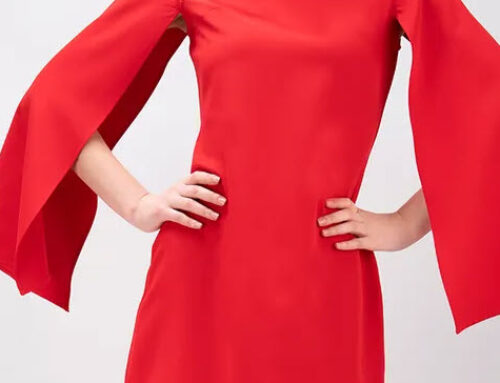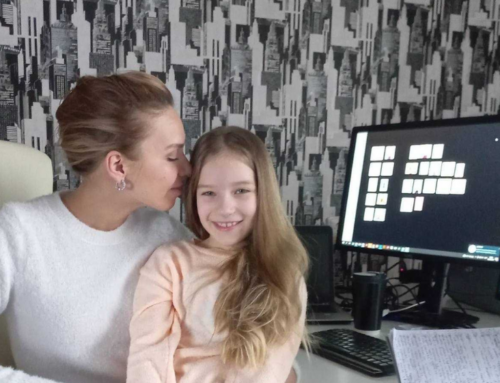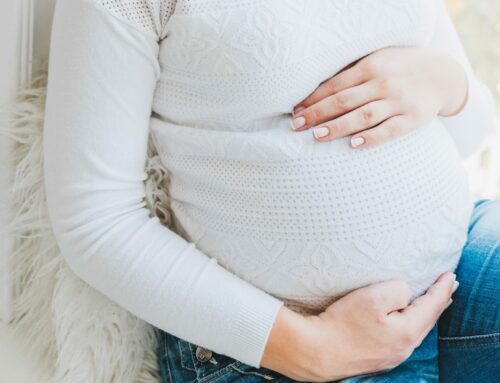If you’ve ever owned a sewing machine, taken in a seam or adjusted a hem, or even just eyed the pattern selection at your local fabric store, you may have some idea of what it takes to make a single article of clothing. But what about producing 100 or more identical garments, in a variety of sizes, all designed to look and feel the same on different bodies?
A prototype is more than a photocopy or a sample. It is the final example of a wearable style that sets the bar for additional garments to be created. It includes the specific hardware, fabric, and specifications of the final design, all the way down to the types of stitching used on every seam.
According to author and expert patternmaker Kathleen Fasanella, the following four conditions are what create a prototype:
- “it fits the way you want it to
- it looks the way you want it to
- it uses the fabric and guts of the goods you intend to buy to make it
- And, lastly, it is sewn the way you want your production units to be constructed.”
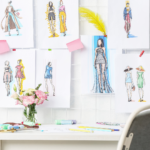 The first step of building a prototype is illustrating the original idea. This is what we often imagine when we think of fashion design – the sketch pad with a colorful drawing depicting a dress or skirt that showcases the imagination and creativity of the artist. However, not all fashion designers are skilled in this medium. Some sketch by hand, and others use digital design tools. Other innovative ways of bringing a concept to life may involve photographing elements from other clothing that has similar features, making a “mood board” approach.
The first step of building a prototype is illustrating the original idea. This is what we often imagine when we think of fashion design – the sketch pad with a colorful drawing depicting a dress or skirt that showcases the imagination and creativity of the artist. However, not all fashion designers are skilled in this medium. Some sketch by hand, and others use digital design tools. Other innovative ways of bringing a concept to life may involve photographing elements from other clothing that has similar features, making a “mood board” approach.
 Once the designer has a concept of what the garment should look like when it is worn, it’s time to put the design into a format that the factory can understand. Technical sketches, aka the “tech pack”, are the blueprints required in order for the manufacturing company to place an order for materials and provide a quote on their services. The tech pack contains technical sketches, call outs for construction detail, machines, and types of finishes required for the garment, bill of materials, measurement specifications, and quality control notes. The tech pack includes notes on fit and construction, as well as the range of sizes you wish to offer.
Once the designer has a concept of what the garment should look like when it is worn, it’s time to put the design into a format that the factory can understand. Technical sketches, aka the “tech pack”, are the blueprints required in order for the manufacturing company to place an order for materials and provide a quote on their services. The tech pack contains technical sketches, call outs for construction detail, machines, and types of finishes required for the garment, bill of materials, measurement specifications, and quality control notes. The tech pack includes notes on fit and construction, as well as the range of sizes you wish to offer.
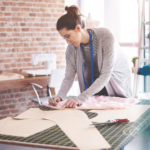 The next stage in the prototyping process is patternmaking. One common assumption is that a sample garment is a three dimensional pattern that you can take apart and make into a sewing pattern. This is not exactly accurate. Pattern creation is just one aspect of building a prototype. Each piece of the garment’s construction must have a pattern that includes the dimensions, as well as the material allocations and markings to help the sewer put the pieces together properly. Another myth about patternmaking is that sizing a garment is as easy as adding or subtracting from the dimensions in a single pattern. In practice, another pattern must be built that illustrates the proper scaling for each dimension of the garment for every size the designer will offer.
The next stage in the prototyping process is patternmaking. One common assumption is that a sample garment is a three dimensional pattern that you can take apart and make into a sewing pattern. This is not exactly accurate. Pattern creation is just one aspect of building a prototype. Each piece of the garment’s construction must have a pattern that includes the dimensions, as well as the material allocations and markings to help the sewer put the pieces together properly. Another myth about patternmaking is that sizing a garment is as easy as adding or subtracting from the dimensions in a single pattern. In practice, another pattern must be built that illustrates the proper scaling for each dimension of the garment for every size the designer will offer.
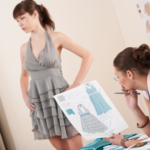 Finally, once the patterns are established, a sample garment is created utilizing the fabric, hardware, and other materials that will also be used in the final production. If the design is couture, meaning one of a kind, then this is not a prototype as only the one garment is produced (bespoke items may go through an interim “muslin” step to fix any fit issues before the final construction). If a designer is working with standard retail sizes, a set of prototypes might be created, one in each size, using human “fit models”, 3D digital avatars, or mannequin dress forms to ensure that they meet the conditions set by the designer. Many brands are moving to digital fit models to reduce waste, which requires a technical expert in 3D software. The process of creating the size-adjusted patterns for each style is called “grading”.
Finally, once the patterns are established, a sample garment is created utilizing the fabric, hardware, and other materials that will also be used in the final production. If the design is couture, meaning one of a kind, then this is not a prototype as only the one garment is produced (bespoke items may go through an interim “muslin” step to fix any fit issues before the final construction). If a designer is working with standard retail sizes, a set of prototypes might be created, one in each size, using human “fit models”, 3D digital avatars, or mannequin dress forms to ensure that they meet the conditions set by the designer. Many brands are moving to digital fit models to reduce waste, which requires a technical expert in 3D software. The process of creating the size-adjusted patterns for each style is called “grading”.
Expert patternmaker Xochil Herrera Scheer says, “When grading sizes within five to six sizes of each other we use complex math and ratios to grow or shrink the pattern. When changing the size more than that, such as plus size, petite, or children’s, a new pattern is made and must be graded or scaled from a different base size pattern and has its own unique grade rules.”
(Note: at Balodana, each garment is “size you” and is typically a customized version of the nearest standard-sized pattern since they’ve been tested for manufacturing quality.)
Once the prototype has been thoroughly revised and is approved for the creator’s expectations for look, feel, and fit, all these materials are then provided to the manufacturer and an order is placed for the trim, fabric, thread, and hardware needed to produce the garment in the desired sizes and quantities. All that for a single style! Think of it: even the simplest items of clothing you wear went through a complex process of decisions, testing, creativity, and documentation before it ever hit production.
As we head into Fashion Revolution month in April, this is a great time to remember to ask yourself: who made my clothes? The answers may surprise you!
Resources:
http://xochil.com/
https://www.youtube.com/watch?v=XM1zLAdQ0zM
https://fashion-incubator.com/whats-a-prototype-and-when-do-you-need-one/

